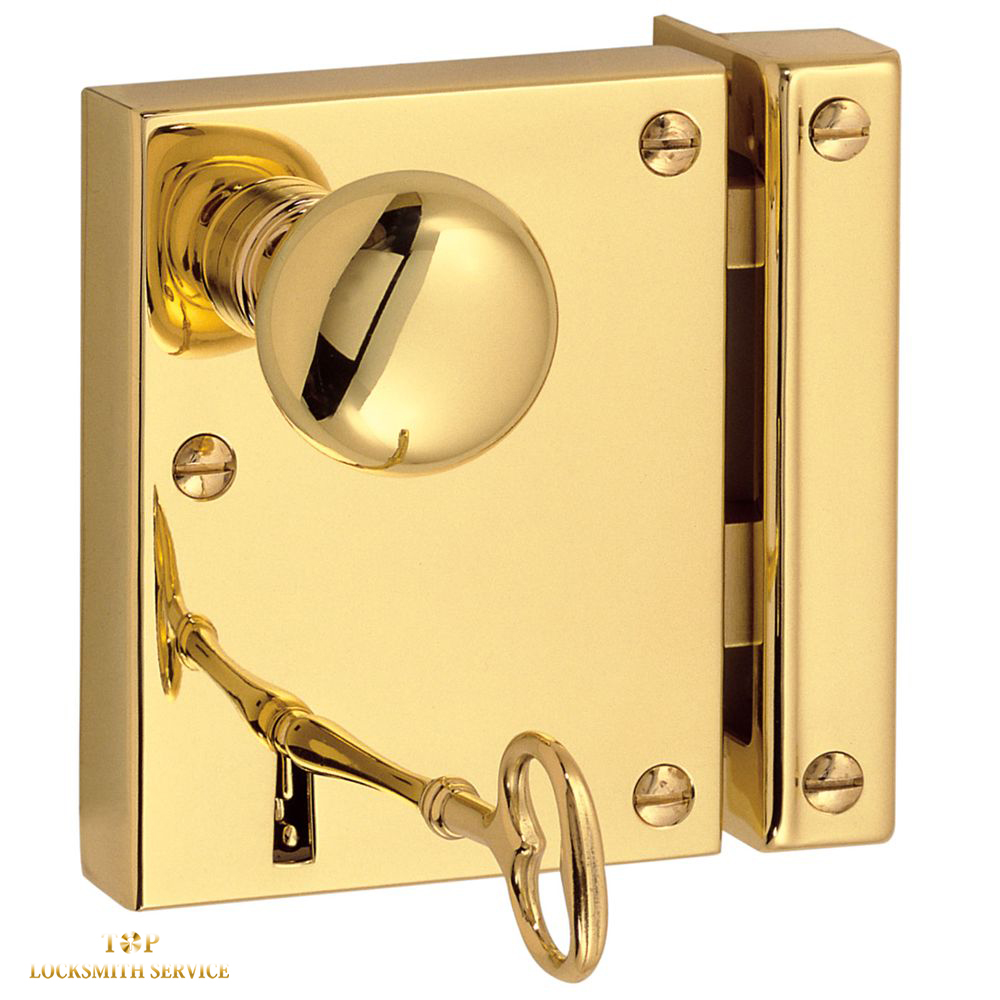Many older homes or apartments utilize rim locks, as they were implemented widely in the early 20th century. Rim locks are surface mounted locks. Rim refers to how it’s installation – on the rim of the door – and they usually use sliding latches or deadlocks that get retracted with pressure, and extended when the pressure is released. Rim locks that use sliding latches have knobs and handles, while deadbolt locks are used with keys. Rim locks allow for key operation of the lock on both sides of the keyway. They are available in rim latch or rim sash versions, where latches are used to hold rim latches and deadbolts/latches are used to work rim sash locks. They are often used on interior doors, as they don’t have strong enough security for exterior doors that are better suited for high security deadbolts. Here’s a guide to Rim Locks from the residential security and commercial security experts at Top Locksmith.
Rim Lock Anatomy
Rim Lock Bodies
Rim locks used to be made of cast iron but are more commonly found these days in brass and nickel. The lock body houses the spring loaded latch and the deadbolt if it’s a rim latch lock. RTim locks are made to work on either right or left hand doors, and they are not always used with a key. Their springed latch can be operated with a handle or knob, and when there’s a deadbolt, it’s held with a lever that raises to latch onto a part of the deadbolt. The bolt can be retracted when the lever is lowered through the insertion of a key.
Rim Lock Keeper
The keeper holds the latch and deadbolt lock in place, and they are often found made of cast iron. Modern rim locks are made of better more long lasting material. Think of the keeper as a rim lock version of a door strike and strike plate, as it’s attached right on the door jamb.
Escutcheon Plate
These plates are often attached to provide additional protection as well as aesthetic appeal. It’s a vintage design style that protects the doorknob and makes an outline over the keyway. Most modern rim locks eschew the escutcheon plate.
Latches
Some rim locks have privacy latches that allow rim locks to be locked from the inside. When the privacy latch is activated, the door can’t be opened from the other side even using a key. This is a safety hazard in emergency situations, so we don’t recommend implementing one.
Potential Rim Lock Vulnerabilities
Rim locks don’t provide the best security. If this is the only lock set in your home, we recommend getting a lock replacement with a high grade security deadbolt. These are some of the potential security flaws associated with rim locks:
- The entire body of rim locks are exposed, and they can easily be bypassed with the assistance of a simple screwdriver. This makes rim locks an inappropriate choice for exterior doors.
- Rim locks can be quickly bested by blunt force attacks like ramming and kicking.
- Warded rim locks can be quickly opened using a skeleton key, which is a tool that’s commonly and easily available to burglars.
Remember, if you’re set on the vintage appeal of your rim lock, you can overcome it’s security flaws by using it ALONG WITH a secure primary security lock, like a high grade security deadbolt.
